The Maritime Archaeology of the Canary Islands
Paloma Cuello del Pozo
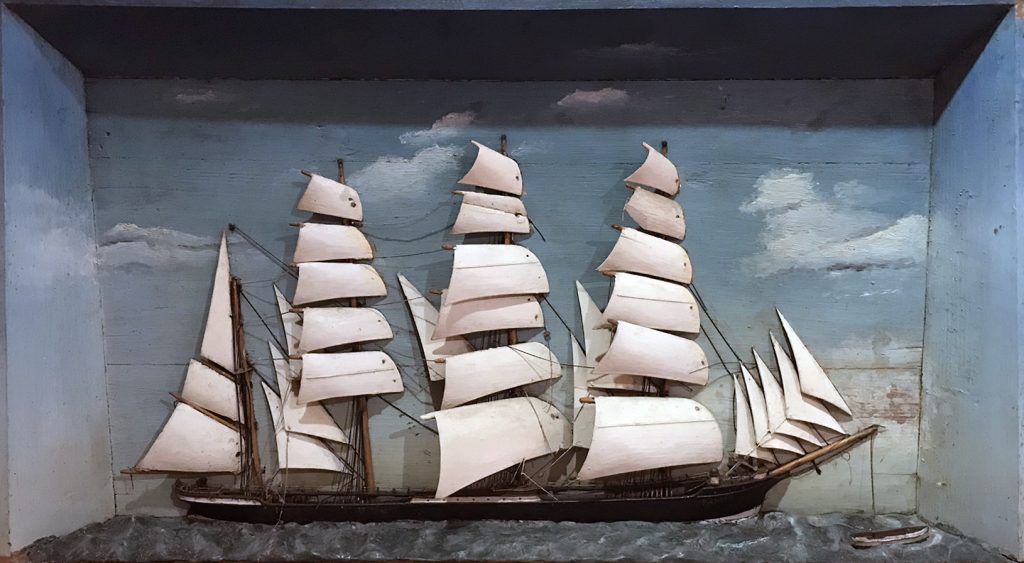
Introduction
The peopling of the Canary Islands is still a matter of debate in archaeology. Two main hypotheses are currently being discussed. One possible explanation considers the settlement of the archipelago started by Phoenician merchants exploring the northwest coasts of Africa (Atoch-Peña, 2003, 2011; González-Antón and Arco-Aguilar, 2007; González-Antón and Arco-Aguilar, 2009).
Nearby evidence from these ancient seafarers comes from the well-documented factory of the island of Mogador, where Stramonita haemasatoma was exploited to obtain the lustrous red dye, a Phoenician trademark (López-Pardo and Mederos-Martín, 2000; Mederos-Martín and Escribano-Cobo, 2002; Wagner, 2008).
Roman cities such as Lixus and Volibus – modern Moroccan cities of Larache and nearby Meknes – were discovered to be original Phoenician settlements strategically located near the northwest African coast highly exploited by these merchants (López-Pardo and Mederos-Martín, 2000, 2008; Mederos-Martín and Escribano-Cobo, 2008).
The oldest evidence of Phoenician presence in west Africa comes from a glass bead found at the site of Nin-Bèrè 3, in Mali, dated between 7th – 5th century BC (Truffa Giachet et al., 2019). From Pliny the Elder (23-79 CE) in his Naturalis Historia, as well as from recent discoveries in the islet of Lobos (Arco-Aguilar et al., 2016; Atoche-Peña and Ramírez-Rodríguez, 2017), it has been widely acknowledged that the islands were once visited and settled by the Roman Empire. The oldest chronologies come from the site of Buenavista in Lanzarote, which brings human settlement as far back as 960 cal. BCE (Atoche-Peña, 2011; Atoche-Peña and Ramírez-Rodríguez, 2017a).
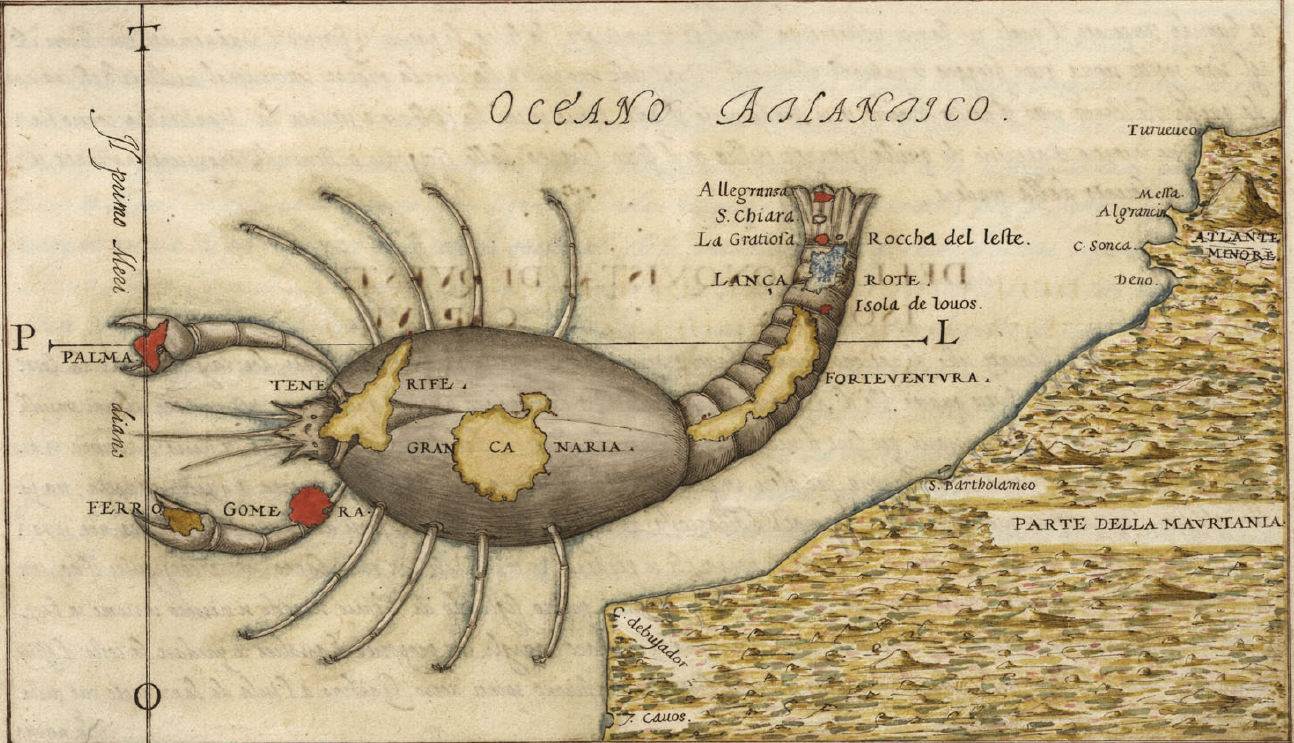
The second hypothesis argues for a later occupation of the archipelago mainly initiated by Roman seafarers who could have brought tribal peoples of northern Morocco, known as Berber tribes (Onrubia-Pintado, 1992; Velasco-Vázquez, 2015; Morales-Mateos et al., 2017; Alberto-Barroso et al., 2019; Fregel et al., 2019; Velasco-Vázquez et al., 2020). The latter were known to be mainly pastoralist communities living inland and lacking long-distance seafaring knowledge. Some authors claim that the earliest occupation of Gran Canaria Island occurred during the 4thcentury CE, a chronology obtained from human bone collagen extracted from the mortuary cave of Guayadeque (Alberto-Barroso et al., 2019; Velasco-Vázquez et al., 2020). Alberto-Barroso and colleagues have argued that the peopling of the islands must have taken place after Roman occupation of the archipelago officially described by Pliny the Elder. However, this early Roman historical source describes the presence of human-made structures in the island of Gran Canaria already present upon the arrival of an exploratory mission by Mauritanian King Juba II (Santana-Santana et al., 2007; Santana-Santana and Arcos-Pereira, 2007). In this island, there was also a species of wild dogs that impressed explorers who captured two specimens to be taken back to Juba II. It is interesting to note that while most people like to reference the anecdotal presence of massive wild dogs, many researchers have decided to obviate the mentioning of anthropogenic activity in the Island of Gran Canaria.
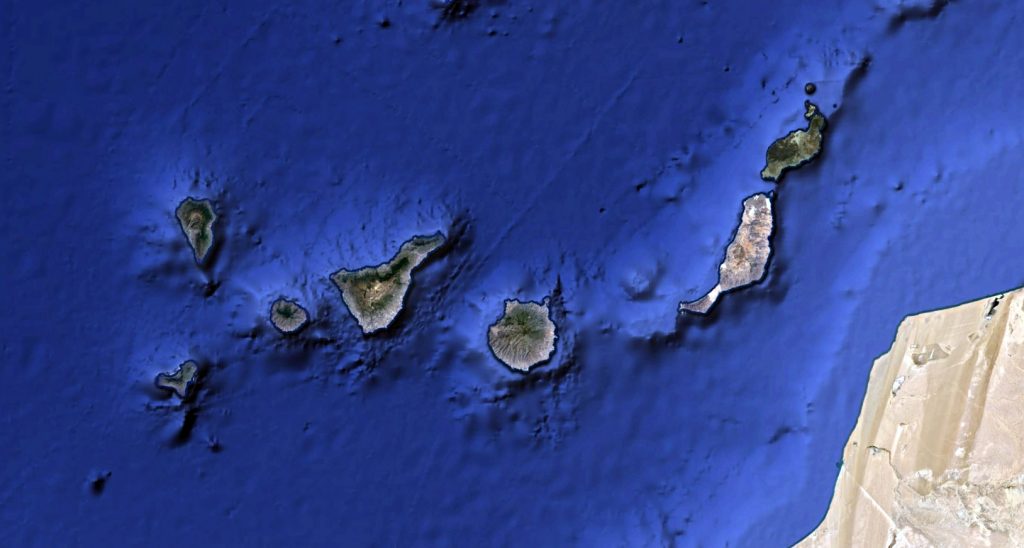
In the late middle age Europeans visited the Canaries, in the late 13th or early 14th centuries. The traditional dates vary around 1300, with the Vivaldi brothers sailing along the western coast of Africa around 1291, or Lanceloto Malocello rediscovering it around 1312, although it is difficult to find a consensual story of the rediscovery of this archipelago among historians. The archipelago was mapped in 1341 for the king of Portugal, Afonso IV (1291-1357), by Florentine and Genoese sailors, and appears in the Medici (1351), Pizzigani (1367), and Catalan Atlas (1375).
Following a period of wars and invasions organized by the Portuguese and Spanish monarchs, the Canary Islands were conquered by the Castillian kings during the 15th century, starting with the expeditions of Jean de Bethencourt (1362-1425) and Gadifer de la Salle (1340-1415). The Treaty of Alcáçovas (1479), between Portugal and Spain, established the Spanish sovereignty over the archipelago.
Early Navigation
Currently, there is no archaeological evidence suggesting inter-island mobility. Generally, the notion that ancient Canarian populations were not capable of navigation and therefore did not interact with other island groups within the archipelago has been mentioned. Thus, the concept that the first populations to settle in the islands were communities brought-in by more knowledgeable ancient maritime societies has sometimes prevailed. However, as the traditional aphorism reminds us: “absence of evidence does not mean evidence of absence.” In fact, ethnohistorical evidences as well as traditional folklore allude to inter-island contact.
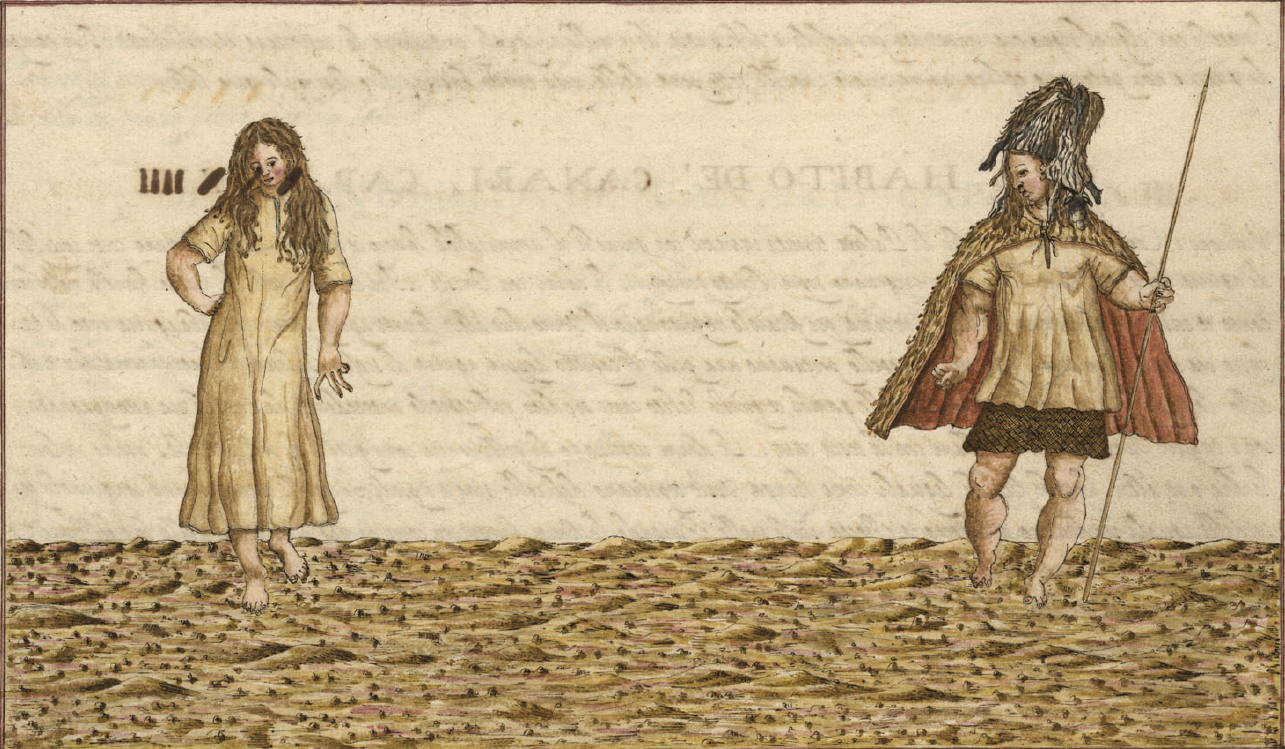
For example, the folktale of Gara & Jonay describes how Jonay was able to sail from Tenerife Island to meet his lover in La Gomera Island. The story describes the use of air-filled goat skins or tissues to sail between islands (Rodríguez-Santana 1996), with the shortest distance about 39 km from Los Cristianos (Tenerife) to San Sebastián (La Gomera). This same type of navigation was described in the story of the advent of fire to La Gomera carried by a woman that also used air-filled goat skins (Rodríguez-Santana 1996). Bethencourt Alfonso, a doctor and influential historian for the Guanche culture (Tenerife aboriginals), described the story of Tauco and Guajara also involving the use of some type of goat tissue that was air-filled and bounded together to travel from Gran Canaria to Tenerife (Rodríguez-Santana 1996).
The chronicles themselves do not talk much about the topic of aboriginal mobility between islands. However, there are small hints alluding to interaction between Canarios (Gran Canaria natives), Guanches (Tenerife groups) and the rest of the populations in the archipelago. Generalizing remarks by Torriani (1959) – who, synthesized much of what was written prior to the 16th century – mentioned that inhabitants from Gran Canaria would raid the islands of Fuerteventura and Tenerife by crossing the sea with dugout canoes from Drago trees, with stone ballast and oars, and sails made of palm leaves as sails. Paloma Cuello argues that this must have been true due to the transmission of judicial laws and funerary rituals between Fuerteventura and Gran Canaria.
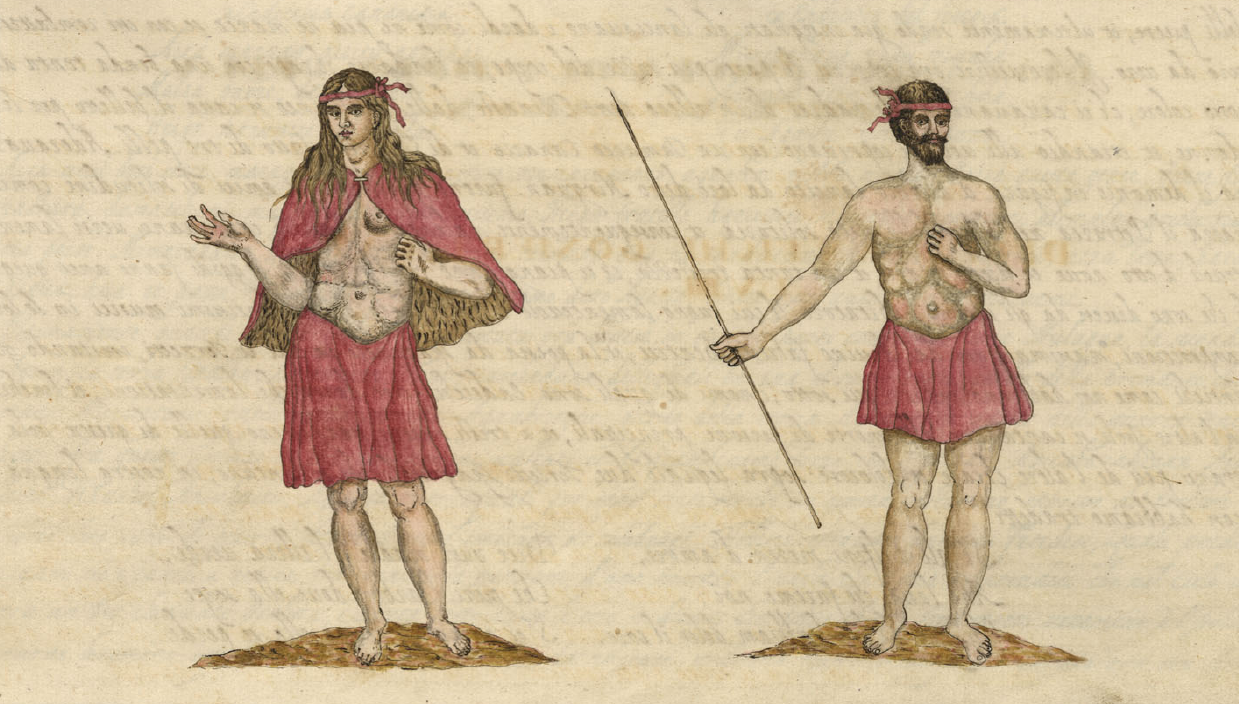
As of now, archaeological evidence is lacking to confirm that this movement between Canarios (natives from Gran Canaria), Guanches (Tenerife) and Mahos (natives from Lanzarote and Fuerteventura) occurred. In terms of transatlantic mobility, there is evidence of major Mediterranean seafaring civilizations having arrived to the Canary Islands (Atoche-Peña, 1995, 2003, 2011; Mederos -Martín and Escribano-Cobo, 2002b; González-Antón and Arco-Aguilar, 2009). Yet main models of island visiting and peopling have been largely based under premises of Mediterranean expansion via seafaring routes. The location of the Canary Islands in the northwest coast of Africa forces us to regard the geopolitical and logistical necessities considered by those ancient societies capable of navigating the Atlantic ocean.
Seafaring Life
The importance of the Canary Islands for the history of the European expansion cannot be emphasized enough. A safe heaven off the rich coast of Africa, the archipelago provided a harbor with fresh water and safe anchorages to the fishermen that profited from the rich coastal waters of the African Continent. Spanish sailors visited these coasts at least since the early 15th century, fishing, salting, packing, and transported conserved fish to Spain or Ireland, or hunting seals, salting their meat, curing their hides, and melting their blubber. During the 15th century the islands were explored for their rich lichens, used for dyeing textiles.
In the late 15th century the archipelago situation, on the routes to the East and West Indies, made the Canary Islands a natural port of call for countless European ships and fleets, and helped developed an important economy eventually based on the production of sugar, then wine, and later cochineal.
In the 19th century a diaspora into the Spanish Americas created trading networks in the New World and boosted the commerce and the shipping industry.
Coveted by kings and pirates, the Canary Archipelago was repeatedly attacked by Muslim and Protestant fleets, and developed an effective defensive system that today adds to its rich cultural heritage.
Underwater Cultural Heritage (UCH)
The Canary Islands do not have much of a coastal platform and most of its shipwrecks probably lie in deep water. A number of shipwreck sites is known and has been studied, and this page is intended as a guide for the understanding of the perhaps unparalleled history and potential of the archipelago deep water cultural heritage.
We are developing two separate archives, one with historical references to shipwrecks, and one of known shipwreck sites. They overlap and we intend to develop geo-referenced tools that may help the researcher make a better sense of the Canary UCH.
Santa Cruz: Museo Naval del Barco de la Virgen
The Santa Cruz Island has an important shipping history, mostly in the 19th century, and its shipyards produced ships for the New World trade whose records are, in certain cases, preserved, and curated at the local Naval Museum.
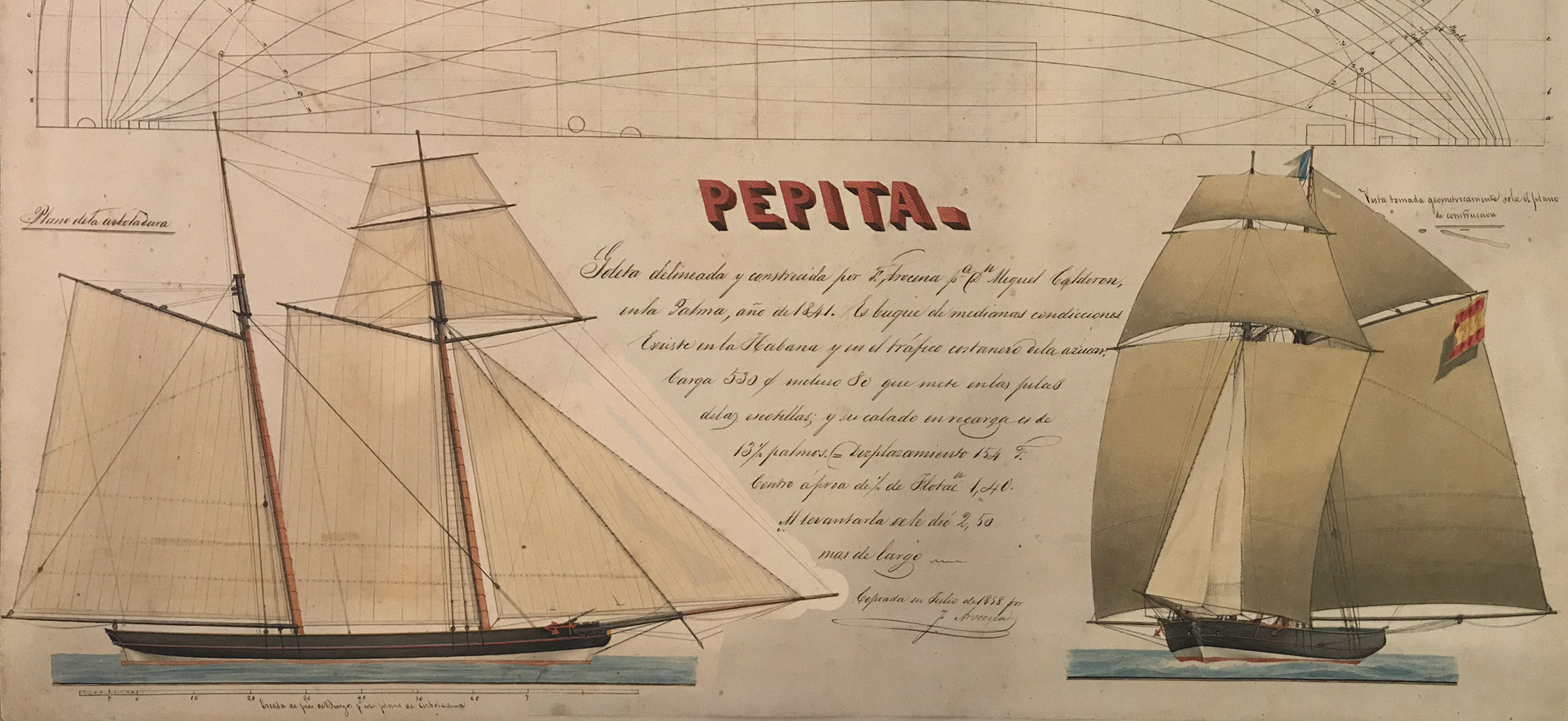
The priceless collection of technical documents, photographs, and oral history accumulated in the museum is being, conserved, curated, and studied, and we would like to share it in our webpage.
References
Alberto Barroso, V., Delgado Darias, T., Moreno Benítez, M., and VelascovVázquez, J., 2019, La Dimensión Temporal y el Fenómeno Sepulcral Entre los Antiguos Canarios: Zephyrus: Revista de prehistoria y arqueología, v. 84, p. 139–160.
del Arco Aguilar, M.M., del Arco Aguilar, M., Benito Mateo, C., and Rosario Adrián, M.C., 2016, Un Taller Romano de Púrpura en los Límites de la Ecúmene (M. M. del Arco Aguilar, M. del Arco Aguilar, C. Benito Mateo, & M. C. Rosario Adrián, Eds.): Sta Cruz de Tenerife, Museos de Tenerife La Naturaleza y El Hombre.
Atoche Peña, P., 2011, Excavaciones arqueológicas en el sitio de Buenavista (Lanzarote): nuevos datos para el estudio de la colonización protohistórica del archipiélago canario: Gerión, v. 29, p. 59–82.
Atoche Peña, P., 2003, Fenómenos de intensificación económica y degradación medioambiental en la protohistoria canaria: Zephyrus: Revista de prehistoria y arqueología, p. 183–206.
Atoche Peña, P., 1995, Resultados Preliminares de la Tercera Campaña de Excavaciones arqueológicas en “El Bebedero” (Teguise-Lanzarote): Vegueta, v. 2, p. 29–44.
Atoche Peña, P., and Ramírez Rodríguez, M.Á., 2017a, Canarias en la etapa anterior a la conquista Bajomedieval (circa s. VI AC. al s. XV DC): colonización y manifestaciones culturales: , p. 43–95.
Atoche Peña, P., and Ramírez Rodríguez, M.Á., 2017b, Gentes del ámbito cultural romano en la protohistoria de canarias, in Santana Henríquez, G. and Pino Campos, L.M. eds., Homenaje a Marcos Martínez, Madrid, Ediciones Clásicas, p. 131–140.
Fregel, R. et al., 2019, Mitogenomes illuminate the origin and migration patterns of the indigenous people of the Canary Islands: PLoS ONE, v. 14, p. 1–25.
González-Antón, R., and Arco-Aguilar, M. del C., 2007, Los Enamorados de la Osa Menor: Navegación y Pesca en la Protohistoria de Canarias:
González Antón, R., and Arco Aguilar, M., 2009, Navegaciones exploratorias en Canarias a finales del II milenio a.c. e inicios del primero: El cordón litoral de La Graciosa (Lanzarote): Canarias Arqueológica: arqueología-bioantropología, p. 9–80.
López Pardo, F., and Mederos Martín, A., 2008, La factoría Fenicia de la isla de Mogador y los pueblos del Atlas:
López Pardo, F., and Mederos Martín, A., 2000, La Factoría Fenicia de la Isla de Mogador y Los Pueblos del Atlas: Sta Cruz de Tenerife, Canarias Arqueológica, Monografías.
Mederos Martín, A., and Escribano Cobo, G., 2002a, Fenicios, púnicos y romanos. Descubrimiento y poblamiento de las Islas Canarias: Estudios Prehispánicos, p. 294.
Mederos Martín, A., and Escribano Cobo, G., 2002b, Las Islas Afortunadas de Juba II. Púnico-gaditanos y romano-mauretanos en Canarias: Gerión, v. 20, p. 315–358.
Mederos Martín, A., and Escribano Cobo, G., 2008, Pesquerías Púnico-Gaditanas y Romano Republicanas de Túnidos: el Mar de Calmas de las Islas Canarias (300-20ac), in González-Antón, R., López Pardo, F., and Peña-Romo, V. eds., IV Coloquio del Centro de Estudios Fenicio Púnicos, p. 345–378.
Morales-Mateos, J., Rodríguez-Rodríguez, A.C., and Henríquez-Valido, P., 2017, Agricultura y recolección vegetal en la arqueología prehispánica de las Islas Canarias (siglos III-XV d.C.): la contribución de los estudios carpológicos: Miscelánea en homenaje a Lydia Zapata Peña (1965-2015), p. 189–218.
Onrubia-Pintado, J., 1992, Canaries ( Îles ): Encyclopédie Berbere,.
Santana-Santana, A., and Arcos-Pereira, T., 2007, La expedición de Juba II a las Islas Afortunadas y el meridiano cero del Orbis Terrarum: Journal of Historical Geography of the Ancient World, v. 9, p. 143–158.
Santana Santana, A., Arcos Pereira, T., Atoche Peña, P., and Martin Culebras, J., 2007, El conocimiento geográfico de la costa noroccidental de África en Plinio: la posición de las Canarias: Imago Mundi, v. 59.
Truffa Giachet, M., Gratuze, B., Ozainne, S., Mayor, A., and Huysecom, E., 2019, A Phoenician glass eye bead from 7th–5th c. cal BCE Nin-Bèrè 3, Mali: Compositional characterisation by LA–ICP–MS: Journal of Archaeological Science: Reports, v. 24, p. 748–758.
Velasco-Vázquez, J., 2015, Más Allá del Horizonte: Una “perspectiva humana” del Poblamiento de Canarias, in Farrujia De La Rosa, A.J. ed., Orígenes Enfoques Interdisciplinares sobre el Poblamiento Indígena de Canarias, Santa Cruz de Tenerife, Idea, p. 25–75.
Velasco-Vázquez, J., Albeto-Barroso, V., Delgado-Darias, T., Moreno-Benítez, M.A., Lecuyer, C., and Richardin, P., 2020, Poblamiento, Colonización Y Primera Historia De Canarias: El C14 Como Paradigma: Anuario de Estudios Atlanticos, v. 66, p. 1–24.
Wagner, C.G., 2008, Tiro, Melkart, Gadir y la Conquista Simbólica de los Confines del Mundo, in González Anton, R., Lopéz Pardo, F., and Peña Romo, V. eds., Los Fenicios y el Atlántico, p. 372.
